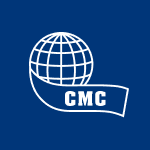Commercial Metals Q2 2021 Earnings Report
Key Takeaways
Commercial Metals Company announced second quarter fiscal 2021 results with earnings from continuing operations at $66.2 million, or $0.54 per diluted share, on net sales of $1.5 billion. Adjusted earnings were $79.8 million, or $0.66 per diluted share. The company achieved a record second quarter Core EBITDA of $171.1 million, up 18% year-over-year.
Second quarter Earnings from Continuing Operations were $66.2 million, or $0.54 per diluted share.
Adjusted Earnings from Continuing Operations were $79.8 million, or $0.66 per diluted share.
Core EBITDA of $171.1 million, a second quarter record, up 18% year-over-year and 9% sequentially.
The company achieved stable steel products metal margins despite a rapidly rising scrap cost environment.
Revenue by Segment
Forward Guidance
The company expects finished steel volumes in both North America and Europe to follow typical seasonal trends during the third quarter. Margins over scrap on steel products in both North America and Europe are expected to increase sequentially following the realization of price adjustments made throughout the second quarter.
Positive Outlook
- Shipments of steel and downstream products in North America should be supported by our construction backlog.
- Steel products also benefiting from elevated residential construction spending.
- Steel products benefiting from continued manufacturing recovery.
- Steel products benefiting from anticipated strong highway infrastructure activity.
- Volumes in Europe are anticipated to remain healthy, driven by growing demand from construction and industrial end markets.
Revenue & Expenses
Visualization of income flow from segment revenue to net income
Historical Earnings Impact
Analyze how earnings announcements historically affect stock price performance

